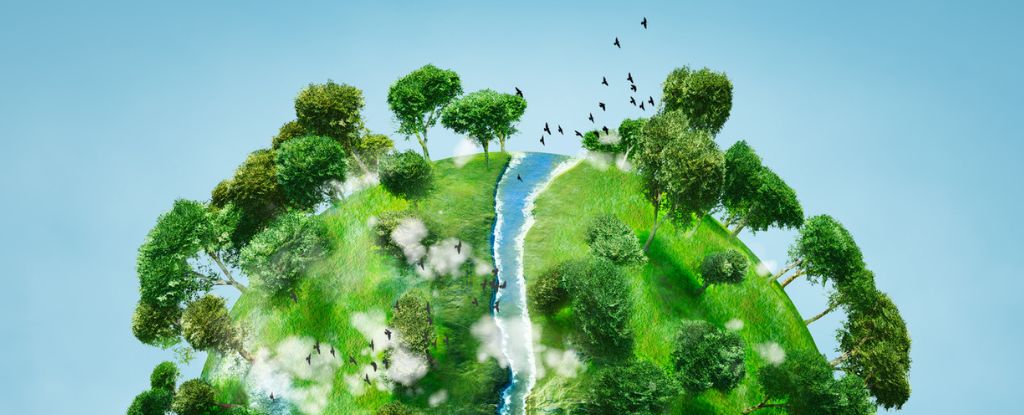Many of us return to work or school after spending time with relatives over the summer. Sometimes we wonder how on earth we are related to some of those people with whom we seem to have nothing in common (especially a particularly annoying relative).
However, from an evolutionary perspective, if we go far enough into the past, we all share ancestors. This means that many features in our bodies date back thousands or even millions of years in our great tree of life.
In biology, the term “homology” refers to the similarity of a structure based on descent from a common ancestor. Consider the similarities of a human hand, a bat’s wing, and a whale’s tail. These all have specialized functions, but the underlying body plan of the bones remains the same .
This differs from “analogue” structures such as wings in insects and birds. Although they serve a similar function, a dragonfly’s wings and a parrot’s wings evolved independently and do not share the same evolutionary origin.
Here are five examples of ancient traits that you might be surprised to see still found in humans today.
One step ahead
What makes us human? This question has occupied scientists and scholars for centuries. Today it seems relatively easy to tell who is human and who is not, but when you look at the fossil record things quickly become less clear.
Begins humanity with the origins of our own species, homo sapiens, from 300,000 years ago? Or should we trace things back more than three million years to ancestors like “Lucy” (Australopithecus afarensis) from East Africa? Or even further back to our split from the other great apes?
Whatever line you draw in the sand to pinpoint the birth of mankind, one thing is certain. The act of ordinary walking on two legs, known as “bipedalism,” was one of the greatest steps taken by our ancestors.
Almost every part of our skeleton was affected by the transition from walking on all fours to standing upright. These adjustments include the alignment and size of the foot bones, hip bones, knees, legs, and spine.
Importantly, we know from fossil skulls that our brain size increases rapidly occurred just after we started walking upright. This required modifications to the pelvis to allow our large-brained babies to fit through an enlarged birth canal.
Our widened pelvis (sometimes called iliac flaring) is a homologous trait shared with several lineages of early fossil humansas well as all living today.
Our big brains then fueled an explosion of art, culture and language, important concepts when considering what makes us human.
A hole in the head
In addition to your eyeballs sitting in their orbits, you might be surprised to learn that you have other large holes (known as fenestrae) in your skull.
There is a single window on each side of the human skull that connects us to ours common ancestor over 300 million years ago.
Animals with this single window in their skull are known as synapsids. The word means “fused arch” and refers to the bony arch located under the opening in the skull behind each eye.
Today, all mammals, including humans, are synapsids (but reptiles and birds are not).
Other famous synapsids from prehistoric times are the often misidentified ones Dimetrodon. The ancient sail-backed reptile is often confused with one dinosaur.
However, with its spreading limbs and single temporal window, it instead belongs to a lineage sometimes referred to as “mammal-like reptiles,” though we prefer the more accurate term synapsid.
10 little fingers and 10 little toes
I’m typing this article on my computer using ten of my digits (fingers and thumb; digits also refer to toes, but mine don’t reach the keyboard).
This five-digit pattern in the human hand or foot, known as the “pentadactyl limb,” is found in most amphibians, reptiles, birds, and mammals.
But fish don’t have fingers and toes, so when did fingers first evolve?
A Recent study by myself and colleagues actually described the first fingers found preserved in a fish fin. We used powerful imaging techniques to look into a 380-million-year-old fossil called Elpistostege from Quebec, Canada to unveil the oldest fish fingers!
Somewhat surprisingly, the first fish to develop fingers still retained fin rays around them, so these bones would not have been visible externally on the animal.
title=”YouTube video player” frameborder=”0″ allow=”accelerometer; autoplay; write clipboard; encrypted media; gyroscope; picture in picture; web-share” allowfullscreen=”allowfullscreen”>
The earliest tetrapods (four-limbed animals with a backbone that eventually moved from water to land) “experimented” with the number of fingers and were sometimes found to have six, seven, or eight.
These earliest tetrapods were probably still aquatic. It wasn’t until tetrapods became truly terrestrial that the five-digit link arrived. This arrangement most likely arose as a practical solution for weight loading on land.
Long getting old
Does your mind wander while brushing your teeth? Well, have you ever thought how old your pearly whites are evolutionarily?
In 2022, a team of paleontologists described isolated fossil fish teeth from Silurian rocks in Guizhou Province, China. This remarkable discovery pushed back the minimum age of the teeth by another 14 million years from previous findings. That means our dentition now dates back to a whopping 439 million years ago.
This new fish, a very early jawed vertebrate, was named Qianodus duplicis and is known only from isolated specialized teeth known as “vertebrae”. A tooth whorl is a bizarre array of teeth that curl up in a spiral pattern (best known in the boater shark, heliprion).
Nonetheless, the teeth of the Chinese jawfish share a number of features found in other modern jawed vertebrates, highlighting their importance in understanding the evolution of our own gnawers. Hit it!
title=”YouTube video player” frameborder=”0″ allow=”accelerometer; autoplay; write clipboard; encrypted media; gyroscope; picture in picture; web-share” allowfullscreen=”allowfullscreen”>
Grow a spine
“Growing a spine” means becoming encouraged and confident. The first animals to do just that must certainly have been brave to venture into the dangerous ancient seas 500 million years ago.
First, these worm-like animals evolved a “notochord” – a rod of cartilage that runs down the back of the body. This allowed for the attachment of segmented muscle blocks and a long tail that extended beyond the anus.
All animals with a notochord are named chordsand includes everything from sea squirts to gulls and includes more than 65,000 living species.
To get an idea of the first chords, today we can look at animals like these lancet (known as Amphioxus or branchiostomy). Lancets look a bit like small, primitive fish without fins. They swim by swinging their bodies from side to side.
Next come those with well-organized heads (skulls) and those with the notochord replaced by a backbone in adults (vertebrates).
A backbone is made up of individual segmented bones (vertebrae) that fit together in a specific interlocking pattern. We have some tantalizing fossils that represent the earliest known examples of vertebrates, such as: Metaspriggina known from Canada Haikouichthys from China in rock more than 500 million years old.
So, whether it’s your big brain and broad pelvis from walking upright, single-opening skulls and bony arches, your fingers, toes, teeth, or your spinal cord, we humans share many ancient features in our bodies.
And so, in the words of poet and activist Maya Angelouit may be worth remembering that we are more alike than dissimilar.![]()
Alice ClemensResearch Fellow at the College of Science and Engineering, Flinders University
This article is republished by The conversation under a Creative Commons license. read this original article.





